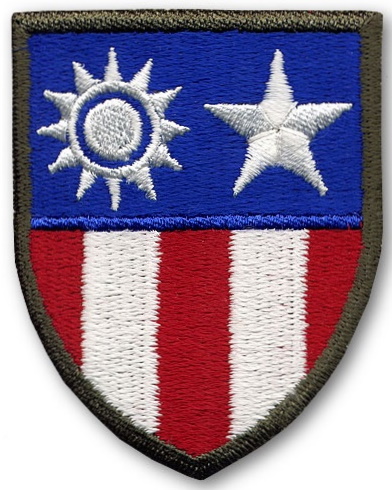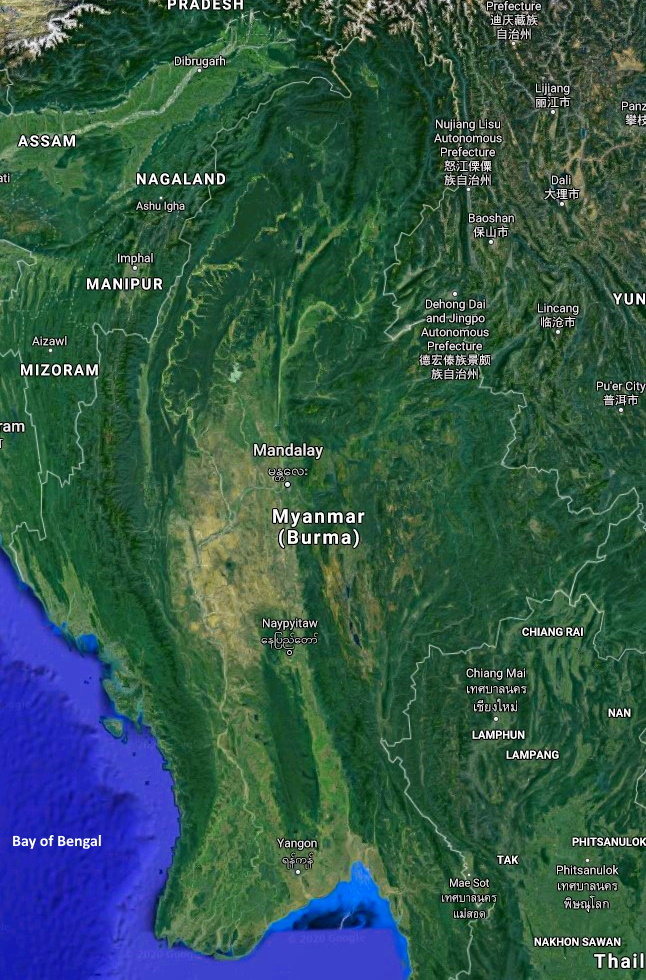The war against the Japanese Army provided a threatening challenge, as it mostly involved fighting in the Jungle. At the initial stage of the war, they were ahead of the British in jungle warfare. Harper claims, the dismal situation within Burma was made gloomier by the fall of Singapore on Feb 15, 1942, . (153) Using the neutral Siam, the Japanese army quickly entered Burma from the south. After the Billin River defense had been broken, units of the 17th Indian Division hastily began to withdraw towards the strategically important Sittang Bridge. Surrender of this bridge intact would lead to the complete annihilation of the 17th Division. To hold the line of the Sittang and deny the bridge to the enemy was the responsibility of the 17th Indian Division, commanded by Gen J. G. Smyth.(154)
 Five Gurkha battalions, as part of 48th and 46th Brigade, were caught up in bitter fighting, with the cut off Japanese groups. Both the battalions of the 7th Gurkhas, the 1st and the 3rd, were continually attacked by the Japanese and were unable to join up with the bridgehead force. (155) Most units have already crossed the bridge. However, the 48th Brigade under Gen Hugh-Jones struggled to block the Japanese approach to the bridge. Owing to someone’s blunder, the Brigade as it marched was subjected to the most vicious attacks by both, the Royal Air Force and the Flying Tiger of the American Volunteer Group’s planes that unfortunately killed many rear-group Gurkhas needlessly. (156)
Five Gurkha battalions, as part of 48th and 46th Brigade, were caught up in bitter fighting, with the cut off Japanese groups. Both the battalions of the 7th Gurkhas, the 1st and the 3rd, were continually attacked by the Japanese and were unable to join up with the bridgehead force. (155) Most units have already crossed the bridge. However, the 48th Brigade under Gen Hugh-Jones struggled to block the Japanese approach to the bridge. Owing to someone’s blunder, the Brigade as it marched was subjected to the most vicious attacks by both, the Royal Air Force and the Flying Tiger of the American Volunteer Group’s planes that unfortunately killed many rear-group Gurkhas needlessly. (156)
Jemadar Krishna Gurung claims, the attack caused many unnecessary casualties; more importantly, the mules of the Gurkha battalions stampeded into the jungle, losing all the equipment, including a wireless set which was the only means of communication. (157) The 5th Gurkhas’ regimental history claims, the situation was very confused and, owing to the virtual lack of all means of communication other than by a liaison officer, orders took a long time to get through. (158) Having no contact at all, the rest of the division assumed that the Gurkhas had been eliminated by the Japanese, however research shows, they were still tenably holding the ground, refusing to give up an inch.
The Division CG Smyth speculated the destruction of units on the east side, as all attempts to establish communication failed. The decision made by Gen Smyth to blow the bridge while many units were still on the wrong side had provoked debates.
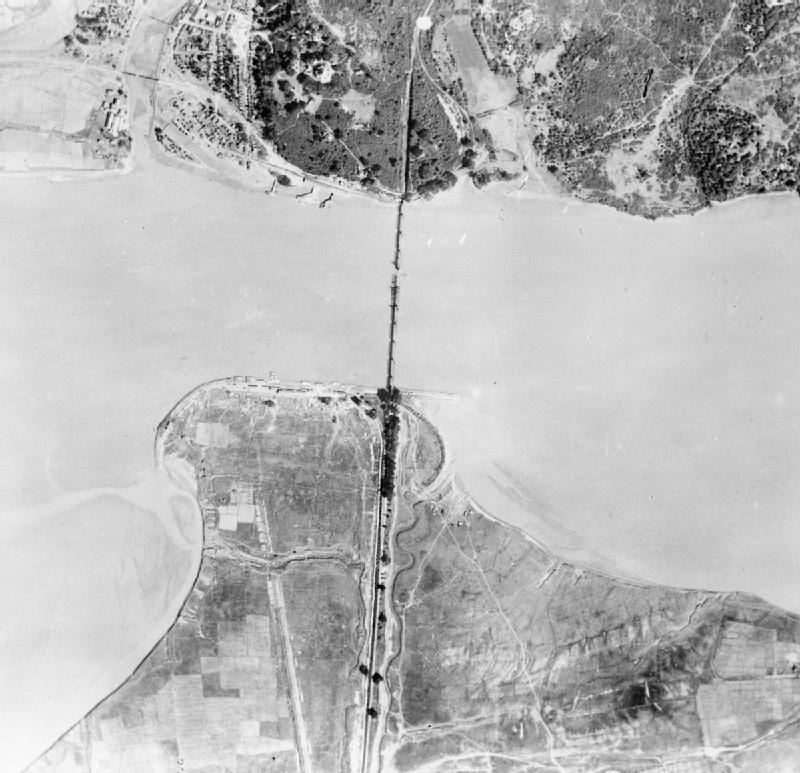 Traditionalist historians claim that a timely decision allowed the retreating troops just enough time to enter India; which saved many lives. On the other hand, contemporary historians argue that the demolition of the bridge was premature. The battalions on the east side had continuously repelled the Japanese attacks. Their argument is; that most of the men could have made it to the west side of the river, saving many lives.
Traditionalist historians claim that a timely decision allowed the retreating troops just enough time to enter India; which saved many lives. On the other hand, contemporary historians argue that the demolition of the bridge was premature. The battalions on the east side had continuously repelled the Japanese attacks. Their argument is; that most of the men could have made it to the west side of the river, saving many lives.
The 5th Gurkha’s regimental history claims, throughout the day on Feb 22, Pagoda Hill and the bridge had been held by our troops. (159) To which, Bailey and Harper’s research shows the bridge was blown prematurely. (160) The official historian Kirby attempts to remain neutral. He claims, Gen Cowan from Divisional HQ, reported the conversation to Smyth who, thinking that most of the division was on the western bank, gave authority to the brigade commander to destroy the bridge. (161) In this debate, the recent publication of Bullock supports the official history, as part of the cause of this tragic occurrence was poor signal communications. (162) It prevented the exact, correct situational awareness of the troops to the decision-making by higher command.
(153) Bayle C and Harper T, Forgotten Armies: The Fall of British Asia, 1941-1945, (Penguin Group, 2004, London), p 159. (154) Trench, Indian Army, p 200. (155) Smith, Brigade, p 121. (156) Trench, Indian Army, p 202. (157) Interview with Jemadar Krishna Gurung, 1/3rd Gurkhas. (158) 5th Gurkha Rifles’ regimental history, V II, p 163. (159) ibid, p 168. (160) Bayly and Harper, Forgotten, p 159. (161) Kirby S. W, The war against Japan, V. II, (Her Majesty’s stationery office, 1958, London), p 72. (162) Bullock, Britain’s, p 139
One could contemplate the possibilities of this event and argue for, or against the decision. However, to the British and Indian troops still on the eastern side of the river the explosion was a shattering announcement. (163) The Commanding Officer of the 1/3 Gurkhas ordered his men to cross the river on their own. Many Gurkhas drowned while crossing the river, as most could not swim.
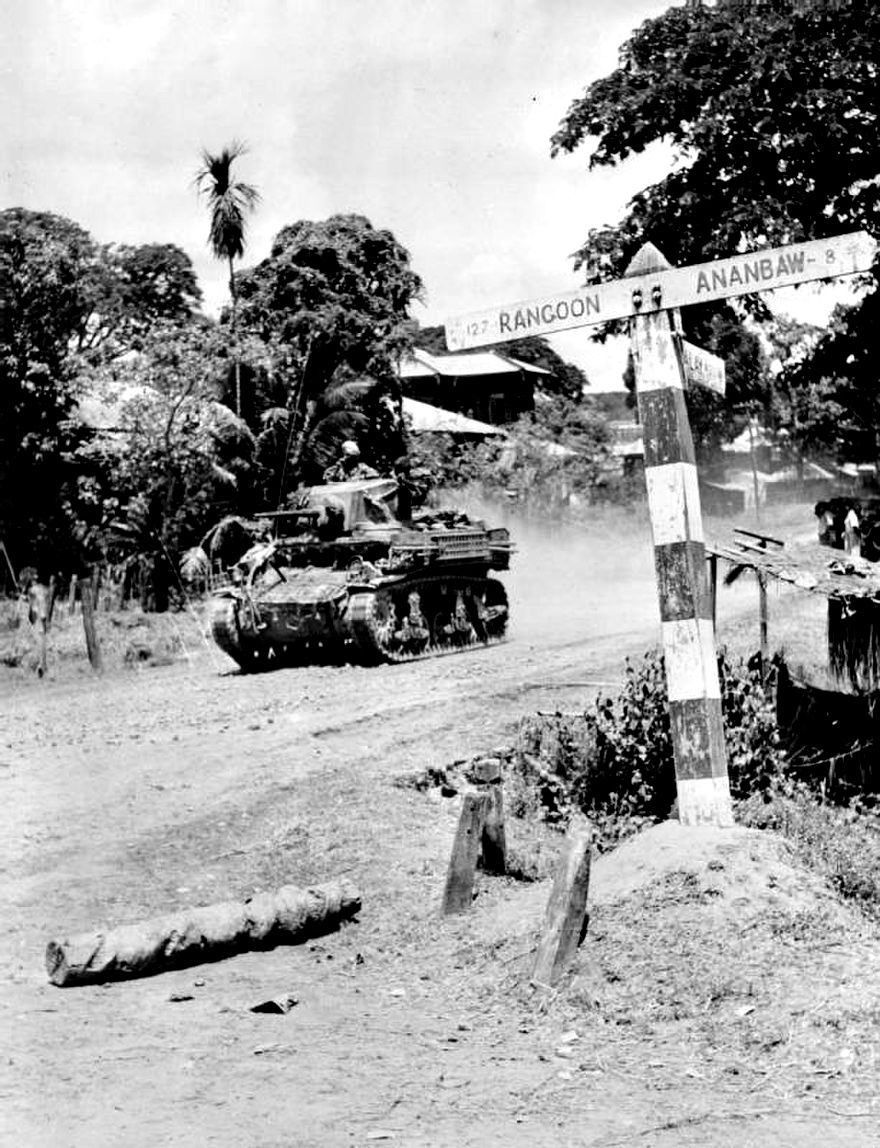 Non-swimmer Jemadar Krishna Gurung asserts, the river was unbelievably big that they stayed overnight for the arrival of the Japanese as they could not cross. (164) The fatality rate of the Gurkhas was high that within two-thousand-five-hundred troops were lost; two-thirds were Gurkhas. It was a heavy blow to the manpower of the Gurkhas to meet the Target 43, at a time of decreasing potential recruits. The 17th Indian Division itself was left to only forty percent of strength, finally evacuated from Rangoon to the Northeast border of India. To which; Marston claims, the strategic situation in Burma changed with the abandonment of Rangoon. (165)
Non-swimmer Jemadar Krishna Gurung asserts, the river was unbelievably big that they stayed overnight for the arrival of the Japanese as they could not cross. (164) The fatality rate of the Gurkhas was high that within two-thousand-five-hundred troops were lost; two-thirds were Gurkhas. It was a heavy blow to the manpower of the Gurkhas to meet the Target 43, at a time of decreasing potential recruits. The 17th Indian Division itself was left to only forty percent of strength, finally evacuated from Rangoon to the Northeast border of India. To which; Marston claims, the strategic situation in Burma changed with the abandonment of Rangoon. (165)
The fall of Rangoon was another great loss to the Indian Army. The Japanese army sought every opportunity to cut off the demoralized retreating army. Initially, the Chinese troops advancing from the North provided some hope, but they never succeeded in blocking the Japanese advance. The arrival of the 7th Armored Brigade from North Africa helped to ease the chaos and boosted the morale of troops to some extent. In this chaotic withdrawal, the Gurkhas acted as a rearguard, life seemed to be one constant retreat punctuated by occasional vicious battles to remove Japanese roadblocks, or counter-attack when the situation had to be restored urgently. (166)
Trench argues, the Gurkhas showed up outstandingly well in this retreat, on two occasions demonstrating that the Japanese were not superman. (167) The 48th Brigade, supported by the 7th Hussars, faced an intense Japanese attack on the defense of the Kyaukse Village, in central Burma. The 1/7 Gurkhas, acting as a rearguard, held fire until the Japanese approached close to one-hundred-and-fifty yards, then released a ‘mad minute’ of simultaneous fire with Bren guns, followed up with the khukuri. It halted the Japanese advance temporarily, losing a hundred heads for the loss of one Gurkha killed and three wounded. The fighting spirit performed by the Gurkhas successfully repelled the desperate Japanese intention of cutting off the 17th Indian Division, before crossing the Irrawaddy River. In this battle, the 48th Brigade fought a sharp action and severely handled the newly arrived 18th Japanese Division in its first big battle. (168)
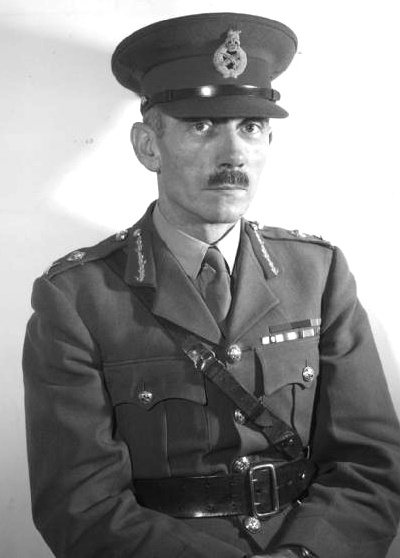 As a result, Slim claims it not only enabled the last of the Chinese to cross the Ava Bridge without molestation and gave us all a breathing space. (169). In supporting the claim made by Slim, Kirby argues that the 48th Brigade had fought a most successful rearguard action and temporarily brought the Japanese advance to a halt. (170) On the top of robust fighting spirit performed by the retreating force, the outset of the monsoon proved difficult for any further efforts of the Japanese, to annihilate the 17th Indian Division.
As a result, Slim claims it not only enabled the last of the Chinese to cross the Ava Bridge without molestation and gave us all a breathing space. (169). In supporting the claim made by Slim, Kirby argues that the 48th Brigade had fought a most successful rearguard action and temporarily brought the Japanese advance to a halt. (170) On the top of robust fighting spirit performed by the retreating force, the outset of the monsoon proved difficult for any further efforts of the Japanese, to annihilate the 17th Indian Division.
Gen Kirby asserts his view behind the defeat of 1942, that; The entry of Japan into the war caused us to make certain adjustments, but on the whole, we did not alter the position very much. (171) In support of Kirby’s opinion, Marston argues, many of the reasons for the defeat were beyond the control of the troops themselves, and in many cases, they rested on decisions made by strategic planners in the 1920s and 1930s. (172) The Japanese attack against the British forces was not initially predicted, as the US base in Pearl Harbour was viewed as a deterrent. This theory primarily brought a set back mind-set to the GHQ India. Slim agrees with Marston in his book, declaring that, intelligence was extremely bad, we were ill-trained and ill-equipped for jungle warfare. (173) It ensured senior commanders that the Indian Army had to undertake a well-planned reformation, to overcome all the existing problems.
 Meticulous attention was paid to administrative troops, as the experience of 1942 taught that, every soldier needs to be capable of fighting against the encircling tactics of the Japanese. The doctrinal and training lessons learned from the war in the Western Desert – two keys to battlefield success – were passed on. (174) Additionally, the survivors’ experiences and knowledge from the retreat of 1942, were given priority. Havildar Jash Bahadur Rai claims that the; Japanese were very clever in the jungle but the Gurkhas learned many jungle tactics from them and applied them against them. (175) Initially, however, senior GHQ commanders gave more priority to training the successes of desert warfare, than to jungle tactics. Despite the initial reformation and the training, the 14th Indian Division’s attack in Arakan (1942) failed. This defeat produced another major blow to the morale of troops. In this case, Moreman blames GHQ India for its handling of training. He argues that the poor combat capability of the Indian Army formations demonstrated in the jungles of Malaya and Burma was largely blamed on their inappropriate organization, equipment, and training for desert warfare. (176) Consequently, Marston argues, the defeat in the Arakan finally convinced the GHQ India to confront the Indian Army’s tactical limitations in the terrain of the Far East. (177) It proved that much preparation and training would be necessary before the attack. As a result, the centralized training center was established, and training started to assimilate primarily concentrating on jungle warfare from mid-1943.
Meticulous attention was paid to administrative troops, as the experience of 1942 taught that, every soldier needs to be capable of fighting against the encircling tactics of the Japanese. The doctrinal and training lessons learned from the war in the Western Desert – two keys to battlefield success – were passed on. (174) Additionally, the survivors’ experiences and knowledge from the retreat of 1942, were given priority. Havildar Jash Bahadur Rai claims that the; Japanese were very clever in the jungle but the Gurkhas learned many jungle tactics from them and applied them against them. (175) Initially, however, senior GHQ commanders gave more priority to training the successes of desert warfare, than to jungle tactics. Despite the initial reformation and the training, the 14th Indian Division’s attack in Arakan (1942) failed. This defeat produced another major blow to the morale of troops. In this case, Moreman blames GHQ India for its handling of training. He argues that the poor combat capability of the Indian Army formations demonstrated in the jungles of Malaya and Burma was largely blamed on their inappropriate organization, equipment, and training for desert warfare. (176) Consequently, Marston argues, the defeat in the Arakan finally convinced the GHQ India to confront the Indian Army’s tactical limitations in the terrain of the Far East. (177) It proved that much preparation and training would be necessary before the attack. As a result, the centralized training center was established, and training started to assimilate primarily concentrating on jungle warfare from mid-1943.
 (163) Kirby, Japan, V II, p 72. (164) Interview with Jemadar Krishna Gurung, 1/3rd Gurkhas. (165) Marston, Phoenix, p 66. (166) Bullock, Britain’s, p 141. (167) Trench, Indian Army, p 213. (168) Smith, Brigade, p 123. (169) Slim W, Defeat into Victory, (Pan Military Classic Series, 2009, London), P 99. (170) Kirby, Japan, p 183. (171) Expansion, L/WS/1/968, (IOR). (172) Marston, A Force transformed, in Military history of India, ed. by Marston and Sundaram, p 108-109. (173) Slim, Defeat, p 35-37. (174) Moreman T, From the desert to sand to the Burmese jungle: The Indian Army and the lessons of North Africa, September 1939-November 1942, ed. by Roy K. in The Indian Army in the Two World Wars, (Brill, 2012, Boston), p 224. (175) Interview with Havildar Jash Bahadur Rai, 3/5 Gurkhas. (176) Moreman, lessons of North Africa, ed. by Roy K. in The Indian Army, p 251. (177) Marston, A force in India, p 111
(163) Kirby, Japan, V II, p 72. (164) Interview with Jemadar Krishna Gurung, 1/3rd Gurkhas. (165) Marston, Phoenix, p 66. (166) Bullock, Britain’s, p 141. (167) Trench, Indian Army, p 213. (168) Smith, Brigade, p 123. (169) Slim W, Defeat into Victory, (Pan Military Classic Series, 2009, London), P 99. (170) Kirby, Japan, p 183. (171) Expansion, L/WS/1/968, (IOR). (172) Marston, A Force transformed, in Military history of India, ed. by Marston and Sundaram, p 108-109. (173) Slim, Defeat, p 35-37. (174) Moreman T, From the desert to sand to the Burmese jungle: The Indian Army and the lessons of North Africa, September 1939-November 1942, ed. by Roy K. in The Indian Army in the Two World Wars, (Brill, 2012, Boston), p 224. (175) Interview with Havildar Jash Bahadur Rai, 3/5 Gurkhas. (176) Moreman, lessons of North Africa, ed. by Roy K. in The Indian Army, p 251. (177) Marston, A force in India, p 111
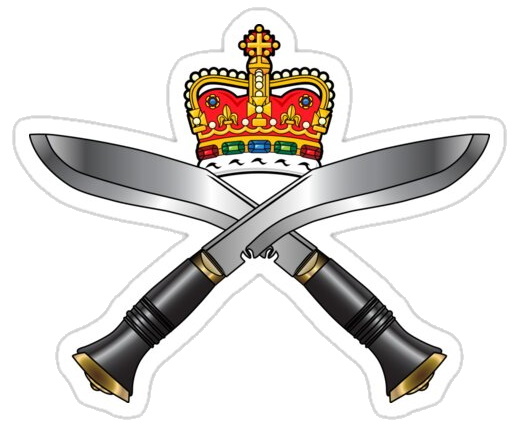 Patrolling and gathering information from the enemy movements and action was seen as a vital contributing factor to the potential success of an attack. Thus each Indian Infantry Brigade planned to have an individual recon battalion. However, this task did not fall on the Gurkhas. According to Marston, consensus was that the Gurkhas would not make good mounted infantry, so they were exempt from the recon battalion duties. (178) Thus, the Gurkha battalions paid extra details on the light infantry training program. On top of the centralized training program, each commanding officer (CO) trained his battalion with his version of the program.
Patrolling and gathering information from the enemy movements and action was seen as a vital contributing factor to the potential success of an attack. Thus each Indian Infantry Brigade planned to have an individual recon battalion. However, this task did not fall on the Gurkhas. According to Marston, consensus was that the Gurkhas would not make good mounted infantry, so they were exempt from the recon battalion duties. (178) Thus, the Gurkha battalions paid extra details on the light infantry training program. On top of the centralized training program, each commanding officer (CO) trained his battalion with his version of the program.
 Especially, the disaster during the Sittang River crossing ensured that swimming training was a paramount priority to the Gurkhas. Indrajit claims, swimming training lasted for a month, and it was tough to pass as the involved training swimming in fighting gear, on top of that; heavy bricks had to be carried. (179)
Especially, the disaster during the Sittang River crossing ensured that swimming training was a paramount priority to the Gurkhas. Indrajit claims, swimming training lasted for a month, and it was tough to pass as the involved training swimming in fighting gear, on top of that; heavy bricks had to be carried. (179)
In this case, the Gurkha battalions faced a further burden of more training programs than any other British and Indian battalions. Despite the intense training for jungle warfare in 1943, two other important factors occupied the Gurkhas during the period of reformation. Externally the First Chindits and Second Arakan operation. Internally the Quit India movement. Sundaram argues, the substantial portion of the nearly 40.000 jawans who joined the INA in 1942 did so to gain better treatment from the Japanese. (180) However, the Gurkhas’ rejection to join the INA caused them to be a victim of brutal Japanese treatment resulting in many deaths.
In such conditions, Craig argues, Of the Rifleman only a tiny number from amongst the youngest joined but did so to escape and rejoin their troops. (181) Rifleman Dhan Bahadur Rana was amongst the twenty-seven Gurkha riflemen, who joined the Japanese propaganda unit fifth column. The following year, in reaching the border with India, they reported to a local garrison unit with information regarding the Japanese Army’s location. (182)
All escaping soldiers were viewed with suspicion, as they were potentially Japanese agents. Jemadar Krishna Gurung faced a series of inquiries and interrogation for four months, upon his return to India from the jail in Rangoon. (183) In this case, the loyalty of the Gurkhas was tested at a critical stage of the war. Their rejection of the INA resulted in the extensive use of the Gurkha units against the independence movement in India. The establishment of the INA under Subash Chandra had already shown consensus, to the nationalist movement in India.
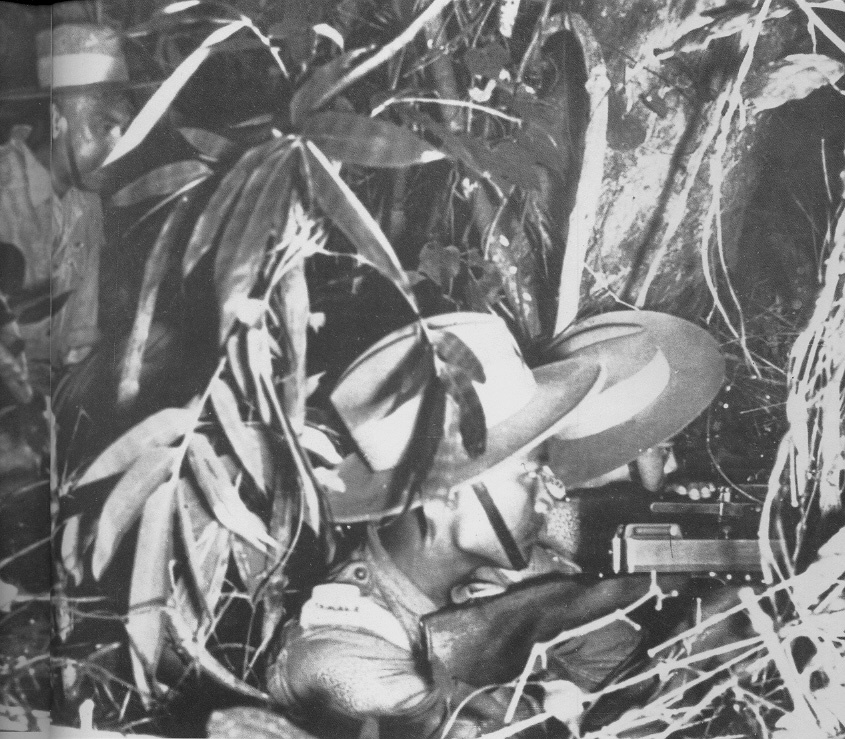 The GHQ India feared shakedown on the morale of the Indian troops, but Churchill had predicted the second mutiny if the situation is not handled correctly. Callahan claims, on the eve of August 1942 upheaval, the Director of the Military Intelligent at the Army Headquarters admitted in a ‘most secret’ memorandum that most soldiers looked forward to post-war independence, but, not to waging mutiny that Churchill had predicted. (184) In this case, the Quit India political movement by the Indian National Congress had caused considerable disruptions to reformation.
The GHQ India feared shakedown on the morale of the Indian troops, but Churchill had predicted the second mutiny if the situation is not handled correctly. Callahan claims, on the eve of August 1942 upheaval, the Director of the Military Intelligent at the Army Headquarters admitted in a ‘most secret’ memorandum that most soldiers looked forward to post-war independence, but, not to waging mutiny that Churchill had predicted. (184) In this case, the Quit India political movement by the Indian National Congress had caused considerable disruptions to reformation.
(178) Marston, Phoenix, p 84. (179) Interview with Indrajit, 3rd Gurkhas. (180) Sundaram C.S, The Indian National Army, 1942-1946: A Circumstantial Force, ed. by Marston D.P and Sundaram C.S, in A Military History of India and South Asia,), p 123. (181) Craig J, The Gurkhas in the Burma Campaign, (Gurkha Museum Publication, 1991, Winchester). (182) Unpublished account of PoW Rifleman Dhan Bahadur Rana (Gurkha Museum Archive). (183) Interview with Jemadar Krishna Gurung, 1/3rd Gurkhas. (184) Callahan R, Did Winston matter? Churchill and the Indian Army, 1940-1945, ed. by Jeffreys A and Rose Patrick, in The Indian Army, 1939-1945 experience and development, (Ashgate Publishing Limited, 2012, Surrey) p 64 As covered in the previous chapter, the autocratic rule of the House of Rana had caused great dissatisfaction among the Nepalese people. The early successes of the Axis forces managed to affect the confidence of the Nepalese students living in India. To overrule the Rana dynasty, the students aligned with the mission of free India by collaborating with INA.
 The men of the Second Rifle of the Nepalese contingent garrisoned in India had already shown their discontent to the British, with the issue of allowance. However, the efforts to lure the Gurkhas remained unsuccessful. On the other hand, the Japanese broadcasted a propaganda message to inflict psychological effects on the Gurkha units. Parts of a message from Radio Rangoon ran on May 2, 1944, like all free nations you should join your hand with the Indo-Japanese forces to combat the evils of British Colonialism, however, neither the propaganda invasion ignited by the Japanese worked.(185) The Gurkhas remained loyal and untouched, instead; providing strong force against the Quit India civil disorder.
The men of the Second Rifle of the Nepalese contingent garrisoned in India had already shown their discontent to the British, with the issue of allowance. However, the efforts to lure the Gurkhas remained unsuccessful. On the other hand, the Japanese broadcasted a propaganda message to inflict psychological effects on the Gurkha units. Parts of a message from Radio Rangoon ran on May 2, 1944, like all free nations you should join your hand with the Indo-Japanese forces to combat the evils of British Colonialism, however, neither the propaganda invasion ignited by the Japanese worked.(185) The Gurkhas remained loyal and untouched, instead; providing strong force against the Quit India civil disorder.
Gen Slim had to deploy 57 battalions on the internal security instead of giving them urgent training for jungle warfare. (186) In such conditions, native Indian units were not the choice of the authorities. Crucially, the substantial portion of these battalions was British nationals or Gurkhas rather than Indians. (187)
 Thus, on top of fighting wars, the Gurkhas’ were once again fully involved in the internal security policy of the empire, as always, and still preferred by the authorities. Nevertheless, the extensive use of the Gurkhas for internal security did not stop the demand for the Gurkhas on the operational front; which, a senior Gurkha commander profoundly claimed as a drain of manpower.
Thus, on top of fighting wars, the Gurkhas’ were once again fully involved in the internal security policy of the empire, as always, and still preferred by the authorities. Nevertheless, the extensive use of the Gurkhas for internal security did not stop the demand for the Gurkhas on the operational front; which, a senior Gurkha commander profoundly claimed as a drain of manpower.
Men of the 3/2 Gurkhas were chosen for the Chindits role, as Wingate preferred young Gurkhas arguing that, a newly raised unit could be easily molded to his ideas. (188) To his decision, Rooney claims, the 3/2 Gurkhas; Made up of untried recruits and inexperienced officers who could not speak Gurkhalithus was to have serious consequences. (189) Operation Longcloth failed from the tactical point of view; the 3/2 Gurkhas alone lost more than four hundred-forty-six men. The performance of the Gurkhas was in Wingate words; a disgraceful exhibition of panic, and were gravely criticized for being mentally unsuitable for this kind of role. (190)
Gurkha Officers have counter-criticized the Wingate’s opinions. Adjutant of 2nd Gurkhas, Phillip Panton declares, I do not think the battalion was adequately led, properly trained, correctively instructed, or imbued with the right spirit. (191) In another case, according to Major Calvert, the 3rd Column commander; the open-warfare style training given to soldiers was not right for the Chindits’ role. He made the argument that specialized training is needed for this kind of operation. In post-assessment, Calvert reports, this was a fault in training, which had said that enemy fire must be answered by silence. (192)
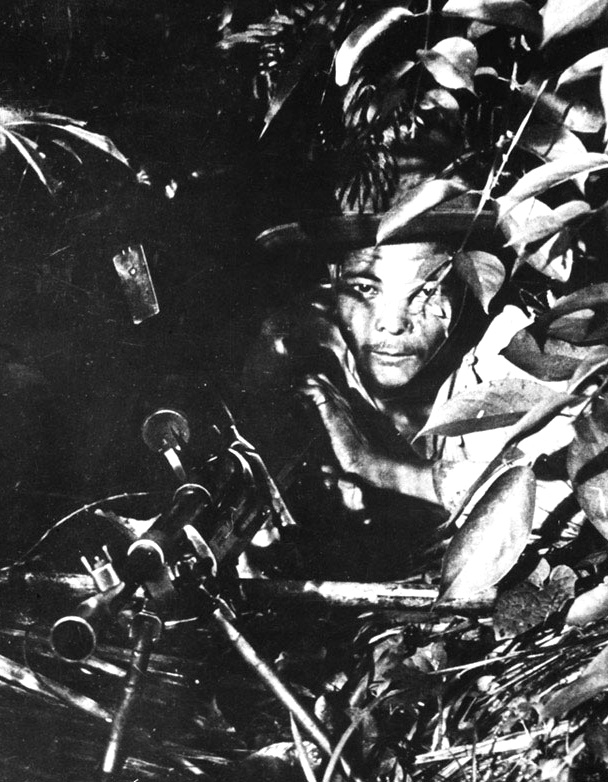 Most importantly, mixing units caused dissatisfaction among the Gurkhas. British soldiers may have been motivated to fight for democracy and Indian for their independence; however, the cause of fighting for the Gurkhas was not common to others. As previously argued in chapter two; Gurkhas from similar tribes and areas in Nepal are mostly recruited in the same regiments, and they treated the regimental environment as natively friendly. The practice of milking reduced combat efficiency, as a Gurkha rifleman is peculiarly the creature of his regiment, and bravery is due to his loyalty to his regiment. (193) In this case, Smith argues by splitting the men up, mixing units, and, quite simply, not understanding that Gurkha soldiers need a different type of leadership to the British, Wingate failed to exploit their best qualities. (194).
Most importantly, mixing units caused dissatisfaction among the Gurkhas. British soldiers may have been motivated to fight for democracy and Indian for their independence; however, the cause of fighting for the Gurkhas was not common to others. As previously argued in chapter two; Gurkhas from similar tribes and areas in Nepal are mostly recruited in the same regiments, and they treated the regimental environment as natively friendly. The practice of milking reduced combat efficiency, as a Gurkha rifleman is peculiarly the creature of his regiment, and bravery is due to his loyalty to his regiment. (193) In this case, Smith argues by splitting the men up, mixing units, and, quite simply, not understanding that Gurkha soldiers need a different type of leadership to the British, Wingate failed to exploit their best qualities. (194).
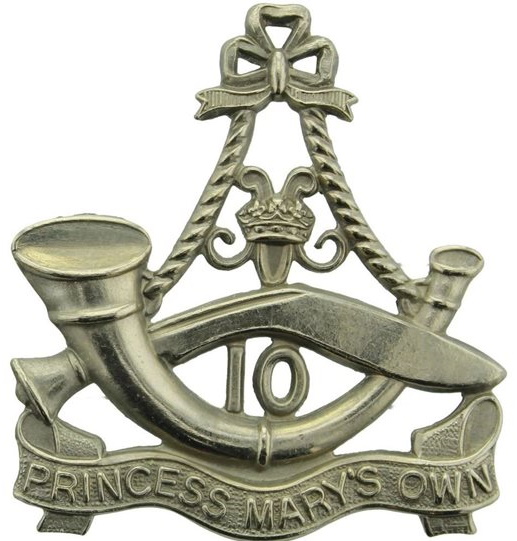 (185) Uprety, Nepal, p 276. (186) Rooney D, Burma Victory, Imphal, and Kohima March 1944 to May 1945, (Cassell Military Classics, 1992, London), p 19. (187) Marston, Forgotten, p 249. (188) Smith, Brigade, p 125. (189) Rooney D, Wingate, and the Chindits: Redressing the Balance, (Cassell Military Paperbacks, 2000, London), p 77-78. (190) Rooney, Wingate, p 84. (191) An unpublished letter sent from ex. Adjutant of 2nd Gurkhas Philip Panton to Chindit brigade commander Gen Bernard Fergusson (Gurkha Museum Archive). (192) An unpublished report on ‘Morale of the Gurkhas’ by 3rd Column OC Major Michael Calvert, (Gurkha Museum Archive). (193) Gould, Imperial, p 252. (194) Smith, Brigade, p 126
(185) Uprety, Nepal, p 276. (186) Rooney D, Burma Victory, Imphal, and Kohima March 1944 to May 1945, (Cassell Military Classics, 1992, London), p 19. (187) Marston, Forgotten, p 249. (188) Smith, Brigade, p 125. (189) Rooney D, Wingate, and the Chindits: Redressing the Balance, (Cassell Military Paperbacks, 2000, London), p 77-78. (190) Rooney, Wingate, p 84. (191) An unpublished letter sent from ex. Adjutant of 2nd Gurkhas Philip Panton to Chindit brigade commander Gen Bernard Fergusson (Gurkha Museum Archive). (192) An unpublished report on ‘Morale of the Gurkhas’ by 3rd Column OC Major Michael Calvert, (Gurkha Museum Archive). (193) Gould, Imperial, p 252. (194) Smith, Brigade, p 126
Despite this futile operation, Bayly and Harper claimed; the First Chindit expedition, which penetrated far behind enemy lines in north Burma, was about to give morale a significant upward blip. (195) Those who had the fear that the Japanese soldier was invincible in the jungles were now obliged to revise their ideas. (196) The increasing air power of the Allied now seemed more practicable in the jungle. Year of reformation and, the moral strength bestowed by the Wingate’s expedition proved encouraging in the Indian army. Entirely resupplied by air, the 4/8 Gurkhas as part of the 7th Division continued to defend the Admin Box in the Second Arakan. Once troops formed a defense after the initial withdrawal, the continuous Japanese suicidal attacks were repulsed, and then, recaptured the previously lost Ngakyedauk Pass.
 In this case, the Gurkhas adopted a series of different roles from withdrawing to offensive operations in the Second Arakan. This model of maneuver was going to be used once again to a great extent in 1944, against the major Japanese offensive. Tuker claims, since 1943, a Gurkha: who is a born jungle fighter, was beginning to grasp what it was all about, and from that time onwards he asserted his absolute superiority over the Japanese soldiers, man for man, patrol for patrol and ambush for ambush. (197)
In this case, the Gurkhas adopted a series of different roles from withdrawing to offensive operations in the Second Arakan. This model of maneuver was going to be used once again to a great extent in 1944, against the major Japanese offensive. Tuker claims, since 1943, a Gurkha: who is a born jungle fighter, was beginning to grasp what it was all about, and from that time onwards he asserted his absolute superiority over the Japanese soldiers, man for man, patrol for patrol and ambush for ambush. (197)
Wingate harbored misgiving about the Gurkhas following the first Chindits Expedition, however, three further Gurkha battalions were added for the Second Chindits operation. (198) In this operation, the 77th Brigade under Calvert blocked the rail line leading to Myitkyina, to disrupt the communication lines of the Japanese 18th Army, fighting against the Chinese of Gen Stilwell’s army. What Tuker termed patrolling and ambushing as small affairs; in this, the Gurkhas excelled and carried this out routinely, many times taking the Japanese by complete surprise.
On one occasion, a Gurkha platoon surprised thirty-five enemies in a patrol group, killing nineteen of them by khukuri and bayonet, for the loss of only two. Tuker claims by patrols and ambushes, the tables were completely turned on the Japanese. (199) Not only in North Africa had the tactics used in the Frontiers become useful; the credibility of patrol and ambush exercised, against the tribes became useful in the jungle.
 As a result of damages inflicted on their communication lines, Chhabe Thapa claims, by now the Japanese knew we were in the area. (200) Upon realizing the danger imposed by the 77th Brigade, a two-thousand strong Japanese force attacked the stronghold position Broadway, later named White City. The harshest fighting raged around OP Hill, the highest point where a platoon from the 3/6 Gurkhas holds for fifteen days against the repetitive Japanese assault. Rooney argues, because of strong repel demonstrated that the Japanese never again threatened ‘White City’ – indeed, the 24 Independent Mixed Brigade ceased to exist as a fighting unit. (201)
As a result of damages inflicted on their communication lines, Chhabe Thapa claims, by now the Japanese knew we were in the area. (200) Upon realizing the danger imposed by the 77th Brigade, a two-thousand strong Japanese force attacked the stronghold position Broadway, later named White City. The harshest fighting raged around OP Hill, the highest point where a platoon from the 3/6 Gurkhas holds for fifteen days against the repetitive Japanese assault. Rooney argues, because of strong repel demonstrated that the Japanese never again threatened ‘White City’ – indeed, the 24 Independent Mixed Brigade ceased to exist as a fighting unit. (201)
Despite this irregular warfare and defensive role in Broadway, the 3/6 and the 3/9 Gurkhas fought an offensive operation in Mogaung. Strategically, it was an important town fortified by four thousand Japanese; its possession would lead to the direct fall of Myitkyina. A company under Capt Michael Almand, of the 3/6 Gurkhas, captured the first objective bridge, however, himself now seriously injured, allowed his company to advance to their next objective Red House. Under intense fire, Rifleman Tulbahadur Pun ‘seized the Bren Gun, and firing from the hip as he went, continued the charge on this heavily bunkered position alone, in the face of the most shattering concentration of automatic fire, directed straight at him. (202) These two individual actions immensely helped the attacking force to win a victory against the Japanese in Mogaung. This victory subsequently helped Stilwell’s Chinese troops in capturing Myitkyina.
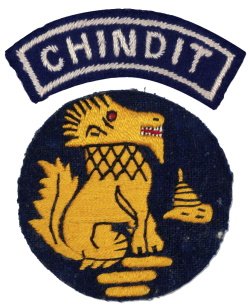
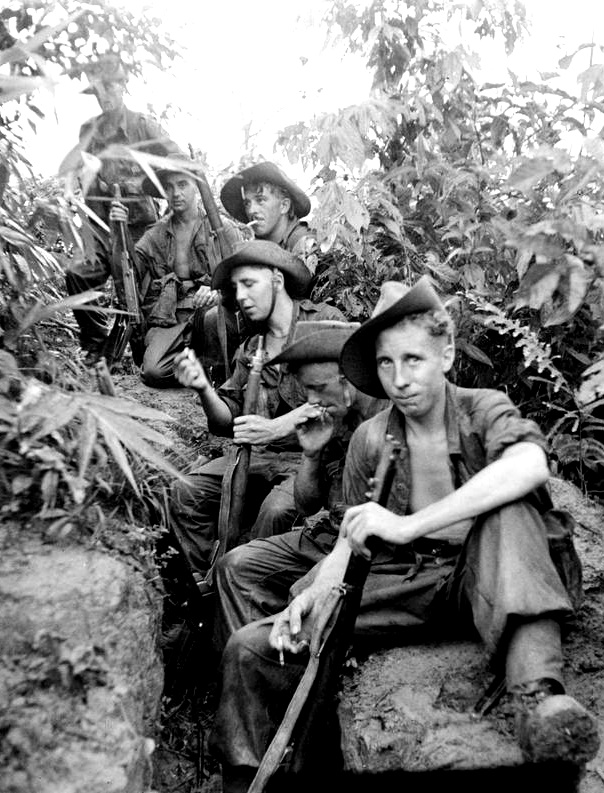 (195) Bayly and Harper, Forgotten, p 269. (196) Bullock, Britain’s, p 147. (197) Tuker, Gorkha, p 221. (198) Bullock, Britain’s, p 149. (199) Tuker, Gorkha, p 222. (200) Cross and Gurung, a battle account of Chhabe Thapa, in Gurkhas at War, p 108. (201) Rooney, Wingate, p 130 (202)
(195) Bayly and Harper, Forgotten, p 269. (196) Bullock, Britain’s, p 147. (197) Tuker, Gorkha, p 221. (198) Bullock, Britain’s, p 149. (199) Tuker, Gorkha, p 222. (200) Cross and Gurung, a battle account of Chhabe Thapa, in Gurkhas at War, p 108. (201) Rooney, Wingate, p 130 (202)
The London Gazette’s announcement of VC recipient, dated on 9th November 1944, compared to the first operation, the Chindits had inflicted a significant scale of damage to the Japanese in the second operation. It caused the Japanese to divert large numbers of troops to try to contain their activities and clear their lines of communication. (203) Additionally, twenty-five percent of the Japanese air force was diverted against the Chindits. Rooney claims, they had a decisive effect on these operations, and they drew off the whole of the 53rd Division and part of 15th Division, one a regiment of which would have turned the scales, against the British garrison units in Imphal and Kohima. (204) In this case, the damage the Chindits inflicted on the Japanese had a tremendous effect on their major offensive in 1944.
Aware of the Japanese operation Ha-Go and U-Go, Gen Slim planned to withdraw the forward units of the 14th Army to the Imphal Plain where he could make good use of his armor and receive supplied by airdrop; at the same time, it stretched the Japanese supply lines. (205) However, Marston argues, orders for the 17th Indian Division were given too late. (206) To this argument proposed by Marston, Rooney supports, the Japanese 33rd Division under Gen Yanagida had come very close to destroying the 17th Division during its withdrawal from Tiddim and had been prevented by the stout fighting qualities of the Gurkhas. (207)
 To the stout fighting qualities performed by Indian units, Bayly and Harper claimed; It was Punjabis and Gurkhas, in particular, the men of the 2nd, 17th, and 23rd Indian Divisions, who came to the rescue of the embattled garrisons. (208) The 153rd Gurkha Parachute Battalion, formed from the Gurkha volunteers fought a defensive battle in Kohima, along with regular 1/4 Gurkhas. Santa Tamang asserts, that the battle against the invading Japanese was waged so seriously that the 153rd Parachute Battalion ceased to exist as a parachute battalion, as only 20 men had survived at the end of the combats. (209) As a result, Bullock claims, this resolute defense, which delayed the Japanese sufficiently long to allow the 5th Indian Division to be redeployed from the Arakan, saved the garrison units from complete collapse. (210)
To the stout fighting qualities performed by Indian units, Bayly and Harper claimed; It was Punjabis and Gurkhas, in particular, the men of the 2nd, 17th, and 23rd Indian Divisions, who came to the rescue of the embattled garrisons. (208) The 153rd Gurkha Parachute Battalion, formed from the Gurkha volunteers fought a defensive battle in Kohima, along with regular 1/4 Gurkhas. Santa Tamang asserts, that the battle against the invading Japanese was waged so seriously that the 153rd Parachute Battalion ceased to exist as a parachute battalion, as only 20 men had survived at the end of the combats. (209) As a result, Bullock claims, this resolute defense, which delayed the Japanese sufficiently long to allow the 5th Indian Division to be redeployed from the Arakan, saved the garrison units from complete collapse. (210)
 Nevertheless, the delay in the order caused the 17th Division one of the complex withdrawals. According to a Gurkha rifleman, , mostly the tactics of a platoon was to block the roads, to prevent the closely following Japanese from cutting off our troops. (211) In this sense, the Gurkha regiments once again fought as rear guard units, the same as they did in the 1942 withdrawal. Elliott claims that the Gurkhas not only refused to give up what they had gained: they refused to accept enemy dictation. (212) After that, a battle raged for several days and nights as the Japanese poured themselves repeatedly.
Nevertheless, the delay in the order caused the 17th Division one of the complex withdrawals. According to a Gurkha rifleman, , mostly the tactics of a platoon was to block the roads, to prevent the closely following Japanese from cutting off our troops. (211) In this sense, the Gurkha regiments once again fought as rear guard units, the same as they did in the 1942 withdrawal. Elliott claims that the Gurkhas not only refused to give up what they had gained: they refused to accept enemy dictation. (212) After that, a battle raged for several days and nights as the Japanese poured themselves repeatedly.
Japs (Machine Gun Battalion) was nearly overrun by the Japanese on the Tiddim road; however, it was saved by the 3/5 Gurkhas, after a fierce battle. Had the Gurkhas arrived a few hours later, the Japs would have been eliminated, and the road cut beyond breaching except by a major operation. (213)
(203) Bullock, Britain’s, p 153. (204) Rooney, Wingate, p 231. (205) James and Sheil-Small, Gurkhas, p 215. (206) Marston, Phoenix, p 138. (207) Rooney, Burma, p 37. (208) Bayly and Harper, Forgotten, p 381. (209) Interview with Santa Tamang, 153rd Gurkha Parachute Battalion. (210) Bullock, Britain’s, p 155. (211) Interview with a Gurkha soldier from the 2/3 Gurkhas from Major Beven’s interviews series. (212) Elliott, Roll of Honour, p 301. (213) ibid, p 300
The battle for the defense of India, in the Imphal plain, was the place where the most significant numbers of the Gurkha regiments fought than in any other theatres of war. Fighting also varied in numbers and tactics ditto the 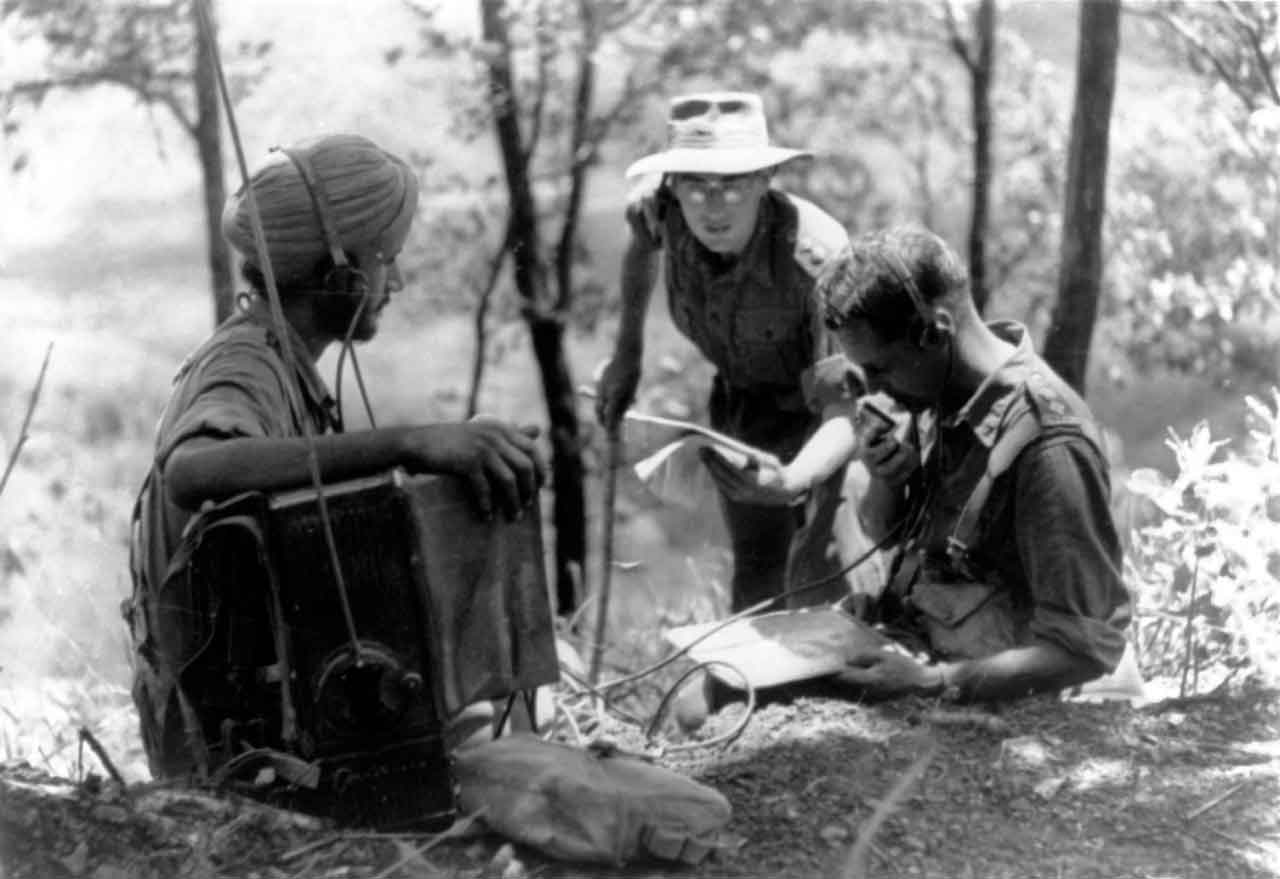 tasks. In relieving the 7/10 Baluch Regiment, a platoon of the 2/5 Gurkhas under Subedar Netrabahadur Thapa, faced a company size Japanese assault, in Mortar Bluff Hill. Tuker argues, for eight hours on a pitch-dark night he and his handful of men held the Bluff against overwhelming odds, often in hand-to-hand battle. (214)
tasks. In relieving the 7/10 Baluch Regiment, a platoon of the 2/5 Gurkhas under Subedar Netrabahadur Thapa, faced a company size Japanese assault, in Mortar Bluff Hill. Tuker argues, for eight hours on a pitch-dark night he and his handful of men held the Bluff against overwhelming odds, often in hand-to-hand battle. (214)
Inferior in manpower and firepower, Subedar fought with hand grenades in a desperate fight, only six men survived out of forty-one. It proves that the Japanese offensive died away, as the Imperial Indian army took every opportunity to keep the defense intact. In this case, Smith claims, as June ended it was clear to Slim and his staff that the Japanese offensive had failed. (215) Bullock claims, Gen Slim’s tactics now changed into a series of hooks designed to get behind the retreating Japanese and hold them up. (216)
Despite the recent defeats, the weary war Japanese retained their morale by any alternative means. Frantic attacks of drunken Japanese were faced by the 1/6 Gurkhas at the Irrawaddy River crossing. Staunch defense in Mandalay meant that the Japanese intended to defend their last defense line before Rangoon, to the last man and the last round. (218)
The key objective of Mandalay was the Monastery, on Mandalay Hill. Two-thirds of the hill was captured by the 4/4 Gurkhas and the Royal Berkshire Regiment after a bitterly consisted struggle, and the rest by the 1/6 Gurkhas, ended the battle of Mandalay. The fall of Mandalay, subsequently led to a victory in Meiktila, by a joint operation of the 1/7 and the 1/10 Gurkhas, with 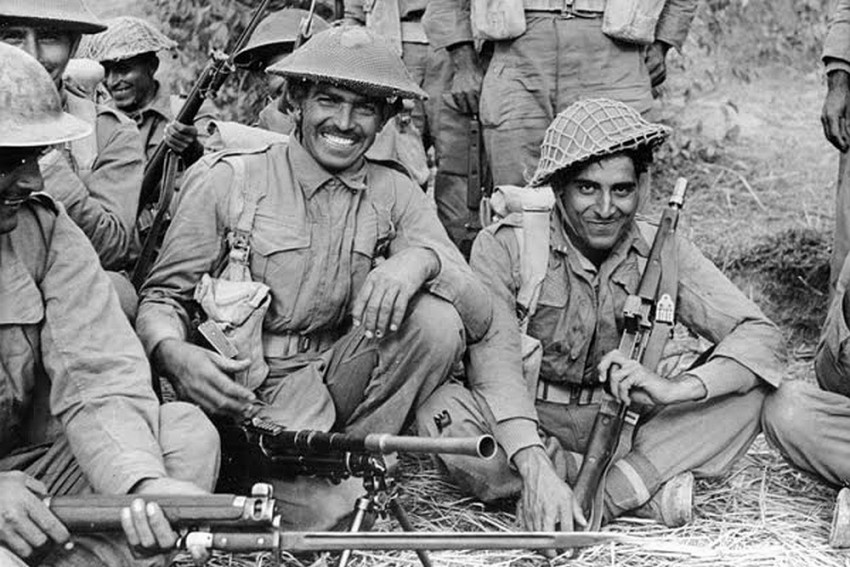 tanks from Deccan Horse. As Lunt claimed, the capture of Mandalay and the Japanese defeat at Meiktila marked a watershed in the 1944-45 Burma campaign. (219)
tanks from Deccan Horse. As Lunt claimed, the capture of Mandalay and the Japanese defeat at Meiktila marked a watershed in the 1944-45 Burma campaign. (219)
In this case, the humiliating retreat of 1942 cost many lives, through no fault of their own, but due to the fault of the strategic planner. During a lull in the war, the Indian Army adopted a complete reform of their Army. Conversely, the Gurkhas’ were extensively busy with operations. The condemnation over Gurkhas’ performance was criticized by Wingate but overshadowed by the superb performance in the Second Chindits and Arakan. All against enormous odds, the major Japanese offensive of 1944 was beaten off, and the fall of Rangoon ensured Japanese defeat by the Indian Army.
(213) ibid, p 300. (214) Tuker, Gorkha, p 225. (215) Smith, Brigade, p 136. (216) Bullocks, Britain’s, p 163. (217) Interview with Captain (Retd.) Balkrishna, 1/6th Gurkhas. (218) Lunt, Jai Sixth, p 52. (219) ibid, p 53
Conclusion
Since the first enlistment in 1815 into the East Indian Company, the Gurkhas have formed a unique fighting force of the British Empire. By the time of WW-2, the native Indian units adopted the Indianisation rapidly, but the policy towards the Gurkhas remained unchanged, and they continued to fight as a unique organization throughout the war. The recruitment system of the men and officers of the Gurkha units was separate from the British and Indians, and their motives behind the fighting power were different. The third force of the British Raj, research has demonstrated that the Gurkhas were the first choice of authorities, both on the front line, and importantly, acted as an alternative to British force for the policy of internal security during the inter-war period, and beyond the war. The reputation of the Gurkhas as fine fighting imperial soldiers and their unquestioned loyalty was at risk, in many situations during the initial stages of the war. After the fall of Singapore, the Gurkha’s loyalty to the British was tested by the enemy, by proposing to join the INA. It was not a political reason to defect, the Japanese provided, but the comfort of life was ensured upon joining. However, the Japanese failed to lure them. The fighting ability itself came to question, with the operational failure of the First Chindits, but again, prior criticisms have been proven inadequate, as the Second Chindits, and further operations prove. Instead; many years of practice of irregular warfare in the Northwest Frontier during the inter-war period resulted in the Gurkhas’ quick adoption in the evolving warfare of the world.
Despite the successful campaigns in the Middle East, senior officers harbored prejudices toward the reputation of the Indian Army. The Gurkha’s successful mountainous operation in North Africa finally forced the senior commanders to revise the opinions that ensured they take the credit for many important battles of the Gurkhas as mountainous fighters in Italy and beyond.
In the Far East, the series of humiliating defeats from Singapore to Burma initially proved the Gurkhas to be inferior to the Japanese in jungle warfare. The reformation of 1943 provided practical, sound training in jungle warfare which ensured the Gurkha’s superiority and galvanized them as a superman of the jungle against the Japanese and in every aspect of soldiering. Once a loyal and brave imperial soldier of the British Raj, the Gurkhas continued to show the previously acclaimed reputation as a superb fighting soldiers throughout the war.
Research has shown, that the Second World War provided an opportunity to re-assess the reputation of the Gurkhas. The performance and bravery of an individual are judged by the award presented to them. The Gurkha brigade won fourteen Victoria Crosses solely in this war. On this international stage of the war, the fighting prowess performed by the Gurkhas expanded their reputation further than the British Raj; notably in North America. Most literature, regarding the Gurkhas, contains stories published by former Gurkha officers, remembering their time of adventure. Few scholarly works have been established. Most are tremendously generalized. With most of the research having been conducted to provide a primary historical record of ‘what Gurkhas did during the war (nothing more) however, research must look further into the rationale of the fighting spirit if one must understand the imperial soldier, the Gurkhas.
Sanju Gurung
Appendix
Indian Infantry WW-2
Section: 8 men commanded by 1 NCO
Platoon: 3 Secs (30 men), commanded by a Lt or a VCO
Company: 3 Plats (100 men), commanded by a Maj or a Capt
Battalion: 5 Cos (+/-850 Men), commanded by a LCol
Brigade: 3 Bns (2 Indian, 1 British) 2500 men, commanded by a BGen
Division: 3 Brigades, 14.000 Men, commanded by a MGen
Corps: 2 or 3 Divs, plus armor and artillery, commanded by a LGen
Army: 2 to 4 Corps commanded by a LGen or full general
Glossary
Terms and Abbreviations
Galla-Walla: Ex-Gurkha NCO, working as a recruiter in Nepal
Bharti: To join the army
Rana: Ruling class of Nepal during the WW-2
Maharaja: Prime-minister
Dashain: A major festival celebrated by Gurkhas (Christmas)
Laure: A popular term used in Nepal, to Gurkhas who are serving, or have served in the British Indian Army, and still refers to Gurkhas as a Laure
Bahaduri: Bravery award
Panipatya: Water purification ceremony in Hindu religion
H-Hour: The exact time, when the initial co-ordinated attacks start on the enemy
Mullah: Local Islamic cleric or mosque leader
Tehsil: An administrative division of some South Asian countries used by the British Raj
Line boys: Children of Gurkhas, living and raised in regimental family quarters
Naik: Corporal equivalent
Havildar: Sergeant equivalent
Jemadar: Lieutenant equivalent, but, was considered junior to lieutenant, no matter the length of service
Subedar. Captain equivalent, but, was considered junior to Captain, no matter the length of service
NCO: Non-Commissioned Officer
CO: Commanding Officer
ECO: Emergency Commissioned Officer
VCO: Viceroy Commissioned Officer
NWF: Northwest Frontier
IOM: Indian Order of Merit
VC: Victoria Cross
INA: Indian National Army
TEWT: Tactical Exercise Without Troops
Bibliography – (Primary Sources)
Chatfield Report, L/WS/1/155, Indian Office Records (IOR) – British Library
Recruitment, L/WS/1/394, IOR-British Library
Expansion, L/WS/1/968, IOR- British Library
An unpublished account of the 2nd Battalion 2nd Gurkhas’ Regimental Records
Documents and historical interests, 1919-1945, (Gorkha Museum archives)
2nd Battalion 6th Gurkhas Rifles’ war diary, (Gurkha Museum Archive)
9th Gurkha Rifles’ war diary, (Gurkha Museum Archive)
3rd Battalion 2nd Gurkha Rifles’ battalion records, 1940-1943, (Gurkha Museum Archive)
An unpublished account of Japanese PoW of the Second World War Rifleman Dhan
Bahadur Rana (Gorkha Museum Archive)
An unpublished letter sent from Ex. Adjutant of 2nd Gurkhas Philip Panton, to Brigadier Bernard Fergusson (Gurkha Museum Archive)
An unpublished report on ‘Morale of Gurkhas’ by Chindits’ 3rd Column Officer in Command Major Michael Calvert, (Gurkha Museum Archive)
Interview with Jemadar Krishna Gurung, 1/3rd Gurkha Rifles
Interview with Gurkha Officer, Army No. 16216, 2/10th Gurkha Rifles
Interview with Subedar (Retd.) Dhan Bahadur Gurung, 2/3rd Gurkha Rifles
Interview with Captain (Retd.) Balkrishna, 1/6th Gurkha Rifles
Interview with Dhan Bahadur Gurung, 2/5th Gurkha Rifles
Interview with Santa Tamang, 153rd Gurkha Parachute Battalion
Interview with Durga Pun, 2/3rd Gurkha Rifles
Interview with Gurkha Rifleman, Army no. 16216, 2/10th Gurkha Rifles
Interview with Havildar Jash Bahadur Rai, 3/5th Gurkha Rifles
Interview with Indrajit, 3rd Gurkha Rifles
Interview with Lt. Col (Retd.) J P. Cross (Ex. Gurkha Officer)
Interview with a Gurkha soldier from 2/5 Gurkhas Rifles. This interview was conducted by Major Beven, but his name and Army no. were not supplied. The accession no. to his interview is: 025152 (Major Beven’s private collection)
Secondary Sources
Lt Col Borrowman C.G, A history of the 4th Prince of Wales’s Own Gurkha Rifles, V II, 1938- 48, (William Blackwood and Sons Ltd, 1952, London)
Royal Gurkha Rifles (Frontier Force), History of the 5th Royal Gurkha Rifles (Frontier Force), Volume I, 1858-1928, (Gale & Polden, 1929, Aldershot)
Officers of the 5th Royal Gurkha Rifles (Frontier Force), History of the 5th Royal Gurkha Rifles (Frontier Force), Volume II, 1929-1947, (Gale & Polden Ltd, 1956, Aldershot)
Lunt J, Jai Sixth; 6th Queen Elizabeth’s Own Rifles 1817-1994, (Leo Cooper, 1994, London)
Lt Col Stevens G.R, History of the 9th Gurkha Rifles, Volume II, 1937-1947, (9th Gurkha Rifles Association, 1953, UK)
Captain C.J Morris, 2/3rd Gurkha Rifles, Gurkhas; handbook for the Indian Army, compiled under the orders of the Government of India, (The Manager of Publications, 1933, Delhi)
Government of India, Official History of Operations on the N.W. Frontier of India: 1936-37, (Government of India Press, 1943, New Delhi)
Rice T and Guy A, The Indian Territorial Force 1920-September 1939 in National Army Museum Publication, (National Army Museum, 1983, London)
Trench C .C, The Indian Army and the Kings enemies, 1900-1947, (Thames and Hudson, 1988, London)
Bayle C and Harper T, Forgotten Armies: The Fall of British Asia, 1941-1945, (Penguin Group, 2004, London)
Marston. D.P, Phoenix from the Ashes: The Indian Army in the Burma Campaign, (Praeger Publishers, 2003, Westport)
Mason. P, A Matter of Honour, (The Trinity Press, 1974, London)
Roy K, The Indian Army in the Two World Wars, (Brill, 2012, Boston)
Elliott. Maj. Gen. J.G, A roll of Honour, The story of the Indian Army 1939-1945, (Cassell and Company Ltd, 1965, London)
Jeffreys A and Patrick R, The Indian Army, 1939-1945 experience and development, (Ashgate Publishing Limited, 2012, Surrey)
Marston D. P and Sundaram C.S, A military history of India and South Asia; From the East India Company to the Nuclear Era, (Indiana University Press, 2008, Bloomington)
Swinson A, North-West Frontier, (Hutchinson & Co, 1967, London)
Playfair, I.S.O, The Mediterranean and the Middle East, V II, (Her Majesty’s stationery Service, 1956, London)
Kirby S. W, The war against Japan, V. II, (Her Majesty’s stationery office, 1958, London)
Lt Col Stevens G.R, Fourth Indian Division, (McLaren and Son Limited, 1948, Toronto)
Smith E.D, Britain’s Brigade of Gurkhas, (Leo Cooper Ltd, 1973, London)
Tuker F, Gorkha; The story of the Gurkhas of Nepal, (Constable and Company Ltd, 1957, London)
Gurung C.B, British Medals, and Gurkhas, (The Gurkha Memorial Trust, 1998, Kathmandu)
Gurkha Museum, The Story of Gurkha VCs, (Gurkha Museum Publication, 1993, Winchester)
Craig J, The Gurkhas in the Burma Campaign, (Gurkha Museum Publication, 1991, Winchester)
Bullock C, Britain’s Gurkhas, (Third Millennium Information Ltd, 2009, London)
James H and Sheil-Small D, The Gurkhas, (Macdonald, 1965, London)
Lt Col Cross J.P and Gurung B, Gurkhas at War; Eyewitness accounts from World War II to Iraq, (Greenhill Books, 2007, London)
Major Northey W.B and Captain Morris C.J, The Gurkhas; Their manners, customs, and country, (William Clowes & Sons Ltd, 1928, London)
Parker J, The Gurkhas; The inside story of the world’s most feared soldiers, (Bounty Books, 2005, London)
Uprety P.R, Nepal: a small nation in the vortex of International conflict, 1900-1950, (Pugo Mi, 1984, Kathmandu)
Gould.T, Imperial Warriors: Britain and the Gurkhas, (Granta Books, 1999, London)
Rooney D, Burma Victory, Imphal and Kohima March 1944 to May 1945, (Cassell Military Classics, 1992, London)
Rooney D, Wingate and the Chindits: Redressing the Balance, (Cassell Military Paperbacks, 2000, London)
Streets H, Martial races, (Manchester University Press, 2004, New York)
Fraser D, And we shall shock them, (Hodder and Stoughton, 1983, London)
Slim W, Defeat into Victory, (Pan Military Classic Series, 2009, London)
Frei. H, Guns of February: Ordinary Japanese Soldiers’ Views of the Malayan Campaign and the Fall of Singapore, 1941-1942, (Singapore University Press, 2004, Singapore)
Sixsmith E.K.G, British Generalship in the Twentieth Century, (Arms and Armour Press, 1970, London)
Harris J.P, Men, ideas and tanks; British military though and armored forces, 1903-1939, (Manchester University Press, 1995, Manchester)
Connell. J, Auchinleck, (Cassell and Company Ltd, 1959, London)
Hamilton N, Monty; Master of the Battlefield, 1942-1944, (Hodder and Stoughton Ltd, 1985, Sevenoaks)
Keegan J, Churchill’s Generals, (George Weidenfeld and Nicolson Ltd, 1991, New York)
Schlaefli R, Emergency sahib; of Queen’s, Sikhs and The Dagger Division, (R J Leach and Co., 1992, London)
Lionel Caplan, ‘Bravest of the Brave’: Representations of ‘The Gurkha’ in British Military Writings in Modern Asian Studies, [Link]
This day in History [Link] (Accessed on 07 March 2013)
The Amritsar Massacre in [Link]
The Gurkhas in National Army Museum Website, [Link] (Accessed on 25/02/2013)
London Gazette’s announcement of VC recipient, dated on 9th November 1944, [Link] (Accessed on 05 March 2013)












